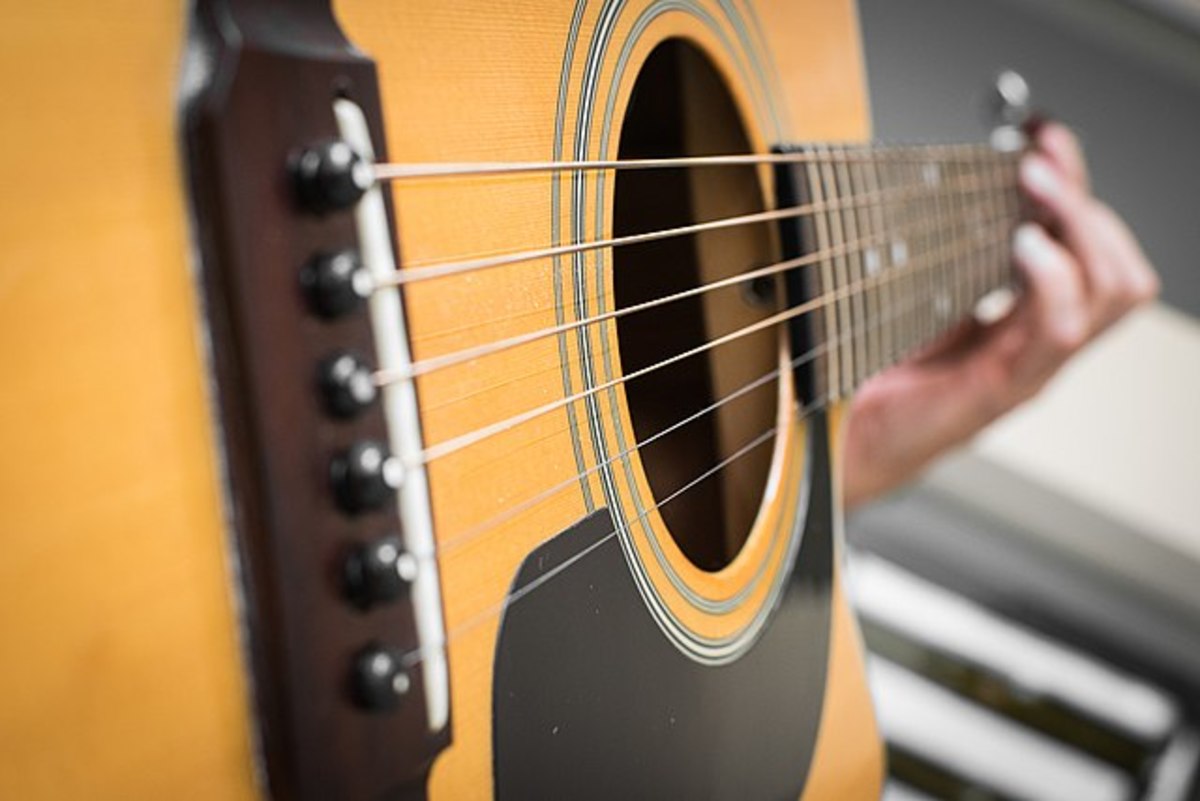Buying Your First or Last Acoustic Guitar - Here Are Some Practical Suggestions
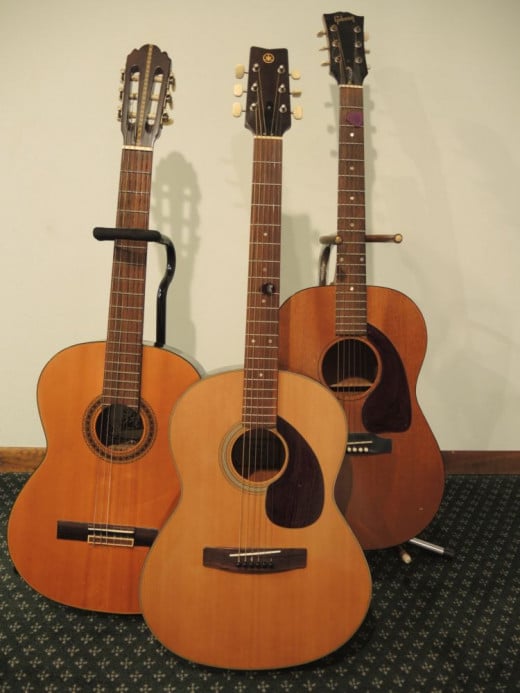
No matter if this is your 1st guitar or your 6th guitar purchase; the experience can be both intimidating and at times overwhelming, to say the least. Especially if you know little-to-nothing about the instrument.
So many choices, how do I start?
This article is NOT intended to recommend or rate a specific brand or type of guitar; it is intended to give some basic information and helpful tips. Use the information below as a guide in your shopping experience.
In the past 30+ years of Buying, Selling, Teaching, and playing guitars I have been asked by many people what should I look for when I purchase a guitar. I have sold hundreds of guitars to both novices and professionals and would like to share my experiences. Hopefully these practical tips will aid you in your guitar buying venture.
COST
The first and most important factor to consider is cost. The first trip to a Music Store to price guitars can be a real shocker. Guitars will range anywhere from under $100 to several thousand dollars. You’ve heard the old expression “you get what you pay for”. That is very true, BUT you also need to use common sense.
Look at your situation and the price range you have in mind. Try to stay within that. If you are buying a guitar for a child just starting there is nothing wrong with staying on the low end of the price spectrum. See if they stay with it and move up to a more expensive instrument at some future date. There are plenty of good starter guitars without breaking the bank. There is nothing wrong with purchasing a good used instrument; it doesn’t need to be brand new to start.
Actually, a seasoned professional might spend thousands of dollars on a new or older used guitar. Most good guitars tend to appreciate in value over many years. But look at your situation and stay within your price range. A 10 year old starting out is not the same as a 20 year old who has played for years.
WHERE TO LOOK
There are a number of options available to find guitars. Anywhere from the ‘Big-Box’ stores, to a Music Store, to a Craig’s’ list ad, to eBay, or the neighbor down the street are possibilities. Again, look at your own situation.
If this is your 1st guitar and you know nothing about a guitar, a trip to a reputable Music store where you can talk to someone who knows the instrument might be worth the trip. Ask if they have any good ‘trade-in’ or closeouts in your price range. Some of the ‘Big-Box’ stores offer inexpensive starter packages, but finding someone who knows about those instruments could be a challenge. Where ever you purchase from, always check what their return policy is. There is nothing wrong buying a good used instrument.
If you are an experienced player who knows the instrument and what you want, then you have the whole spectrum of choices. Great old instruments can be found in some odd places, but you need to be very knowledgeable about the instrument.
SIZE AND TYPE OF GUITAR
There are a couple of different sizes and types of guitars. You should get something that is comfortable to play and fits your size.
For small children, companies do make ½ and ¾ size guitars in both electric and acoustic guitars. For a smaller child just starting these tend to be much easier for them to play compared to a standard size guitar. They also tend to be at the bottom of the price range in cost. It will most likely be outgrown very soon, but is a good option to see if a small child will like playing and not break the bank in the process.
If the person is not a child, I would recommend purchasing a full size instrument. Don’t waste your money on a ¾ size. Stay with a standard size guitar.
There are 2 basic types of guitars; steel stringed guitars or nylon stringed guitars. Nylon stringed guitars are also known as ‘Classical’ guitars, but can be played in a conventional manner too. Willie Nelson is the most popular non-Classical player that plays this type of guitar.
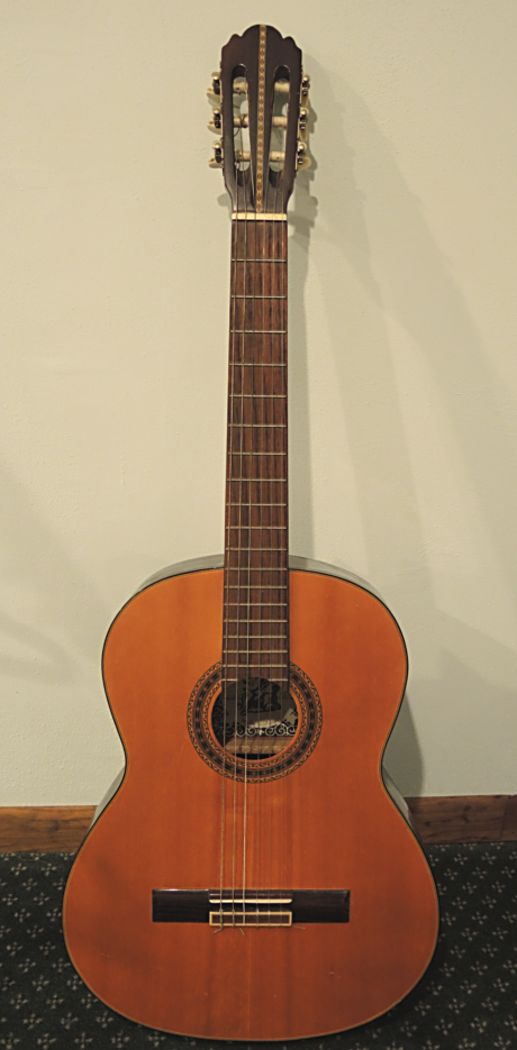
The nylon stringed guitar tends to be easier on the fingers than a standard steel stringed instrument. It does have a softer, mellower tone compared to a steel stringed guitar
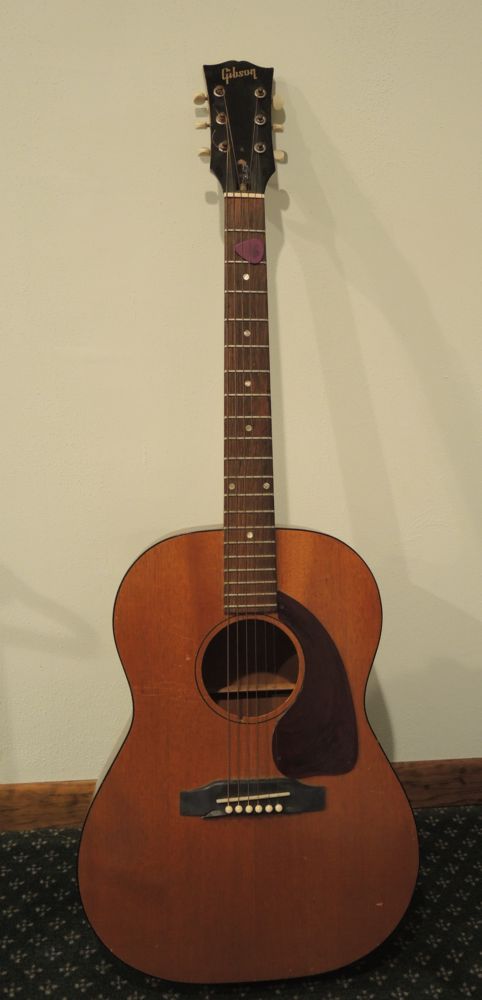
The Steel stringed guitar is by far the most popular type of guitar and has a rich tone. I would highly recommend trying both types or guitars and see what feels more comfortable for you. Most likely, you will have one of each at some point in time if you keep playing.
FEATURES
Probably the biggest factor driving cost in a guitar is the type of wood the guitar is made from. Generally, the more inexpensive guitars are made from a Mahogany Laminate wood. The more expensive guitars are made with solid spruce, rosewood, or other exotic wood. The better the quality and age of the woods, the better responsiveness and tone of the guitar. Just like old violins, as quality wood ages, the tone of the guitar improves over time. That is why very old guitars could command tens of thousands of dollars over time.
Some of the more expensive guitars also have very fancy types of stone inlays on the sides, neck, and face of the guitars. You will not find these on any of the lower price ranged guitars.
The quality of the hardware on the guitar also leads to an increase in the price. One example is the quality of the tuning keys on the instrument. Good quality tuning keys generally will help keep the guitar in tune longer. You’ll be able to compare the tuning keys on a guitar just by looking at various models and feeling them.
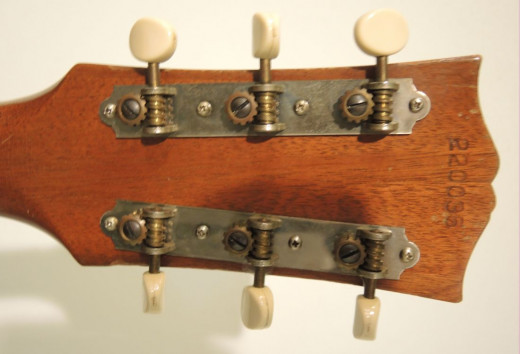
Strings on any guitar are relatively easy to replace and generally run from $4 to $12 a set. You can also replace a single string if need be at an inexpensive cost. So don’t be concerned if you find a used guitar that has older strings. They are easy to replace at a small cost.
The wood piece on the face of the guitar where the strings attach is called the bridge. The more expensive guitars will also have fancier bridges.
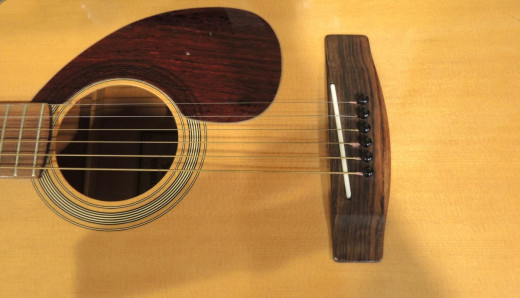
You’ll most likely want a case (or heavy bag) to keep your guitar protected in and to use to transport it. That is usually an extra cost depending on the quality of the case. You’ll need to add that into your budget as well.
OTHER THINGS TO WATCH FOR
Make sure the neck of the guitar feels comfortable to play with your hands. Some of the very inexpensive guitars have very fat, clumsy feeling necks that will be difficult to play. Pay close attention to the feel of the neck for your hands. As a rule ‘Classical’ guitars ( nylon string guitars) have wider necks than steel stringed guitars, that is normal. But, make sure the guitar still feels comfortable for your hands.
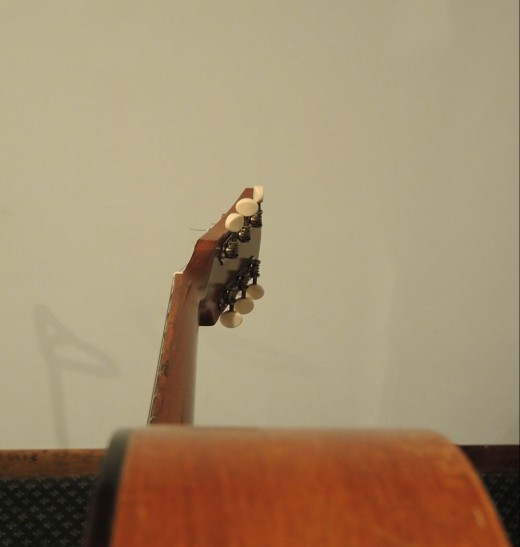
If you take the guitar and hold if up to your face and look straight down the neck make sure the neck is straight. You DO NOT want a guitar with a warped neck. Especially watch for that in a used guitar and look elsewhere if you see a warped neck. Steel stringed guitars do have a metal bar that runs inside the neck so you can adjust some of a warp, but make sure that the neck is correctable by adjustment before you consider a guitar with a warp. Seek the opinion of a good guitar repair man in this case.
Make sure the frets on the neck of the guitar (these are the 15+ smallmetal bars that run on the neck under the strings) are in good condition. You should not see any deeps groves or bad wear on the frets. A re-fret repair could be a costly and necessary repair.
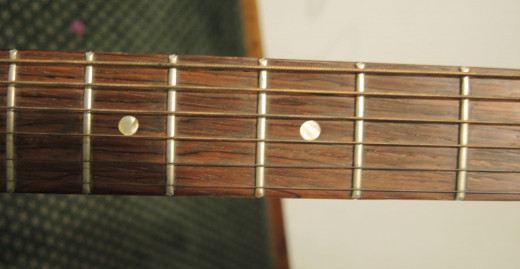
Check the wood (especially the top) for cracks or warping. Warping is very bad and expensive to repair. Cracking is not ideal, but sometimes won’t affect performance. Weather-checking on the surface of guitars is common on older models and usually is only a visual concern.
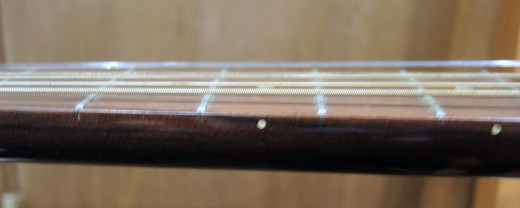
Make sure the distance from the strings to the frets is pretty uniform all the way down the entire neck. Also make sure it is easy to press the strings down to the fret. When strings are very high from the frets, it will make playing very painful on your finger tips and very hard to do. This is also a sign that there could be warping of the neck.
And the most obvious of all – Listen for the sound and tone of the guitar. If you compare 3 or 4 guitars you will most likely find that each will sound different from the other. Buy something with a pleasing sound to your ears.
If you have any other questions or comments feel free to contact me through the comments at the end of the article. Otherwise I hope this article helps with purchasing a guitar.



